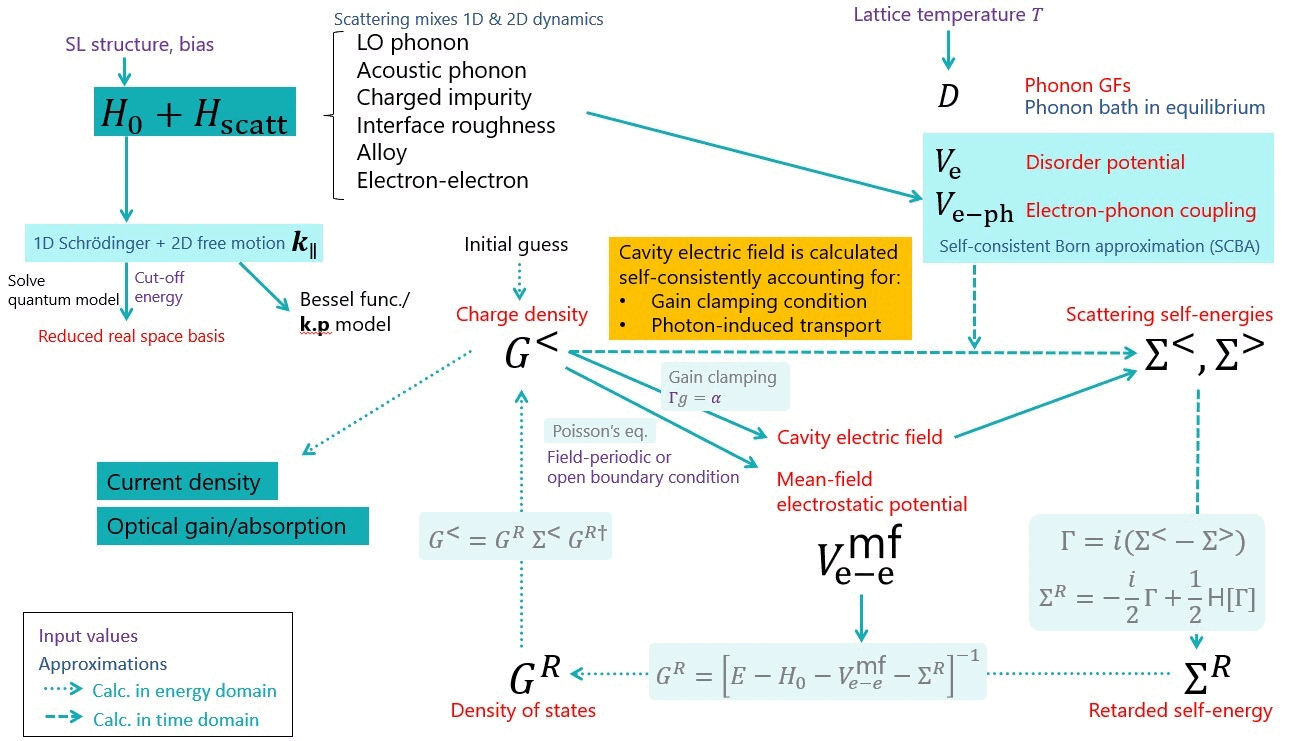Self-consistent iteration¶

Figure 4.2.2 Self-consistent solution algorithm below and above lasing threshold.¶
Convergence¶
The NEGF self-consistent loop ends successfully if the relative difference between two consecutive iterations has reached ConvergenceValueGF for the lesser Green’s function and ConvergenceValueCurrent for the current density. If the convergence is not achieved, the iteration is terminated after NMaxIterations.
Note
Small values for the convergence values, together with sufficiently large NMaxIterations, will give the most accurate results.
Photon-assisted transport¶
Photon-assisted transport can be modeled by specifying an electromagnetic (EM) mode by the keyword EMmode{ }.
Note
In the current version (2024-09-16), only a single EM mode is supported at a time (i.e. multi-mode lasing operation is not supported).
The electric field in this EM mode can be either imposed (detection mode, EMmode{ ElectricField }) or calculated self-consistently (gain clamping). The detection mode is relevant to study quantum cascade detectors and/or to study the role of photon-assisted transport.
Relation to gain calculation¶
The gain feature calculates the linear response to an a.c. incoming field. In this case, the d.c. current is not modified. On the other hand, the photon-assisted transport is modeled through the use of a self-energy (self-consistent Born approximation) to describe both absorption and stimulated emission processes, and has an influence on the d.c. transport. In the case of the electron-photon self-energy, a gain is also calculated at the specified EM mode energy. However, the calculated gain slightly differ from the one calculated using linear response, even for small intensities, as broadening effects are not treated within the same level of approximations in the two cases. This is all the more the case when going to small photon energy (i.e. long wavelengths). Hence this method can produce unreliable results in terahertz devices where broadening effects are comparable to the photon energy.
Gain clamping¶
Gain clamping is relevant to the simulation of quantum lasers. When the modal gain \(g_c\) reaches the cavity losses, lasing starts and the gain is clamped to the cavity losses, that is
The modal gain (or cross-section gain) is defined as
where \(g\) is the material gain in the active region and \(\Gamma\) the overlap factor between the cavity mode and the active region. See GainClamping, OverlapFactor, and CavityLosses for input file specifications.